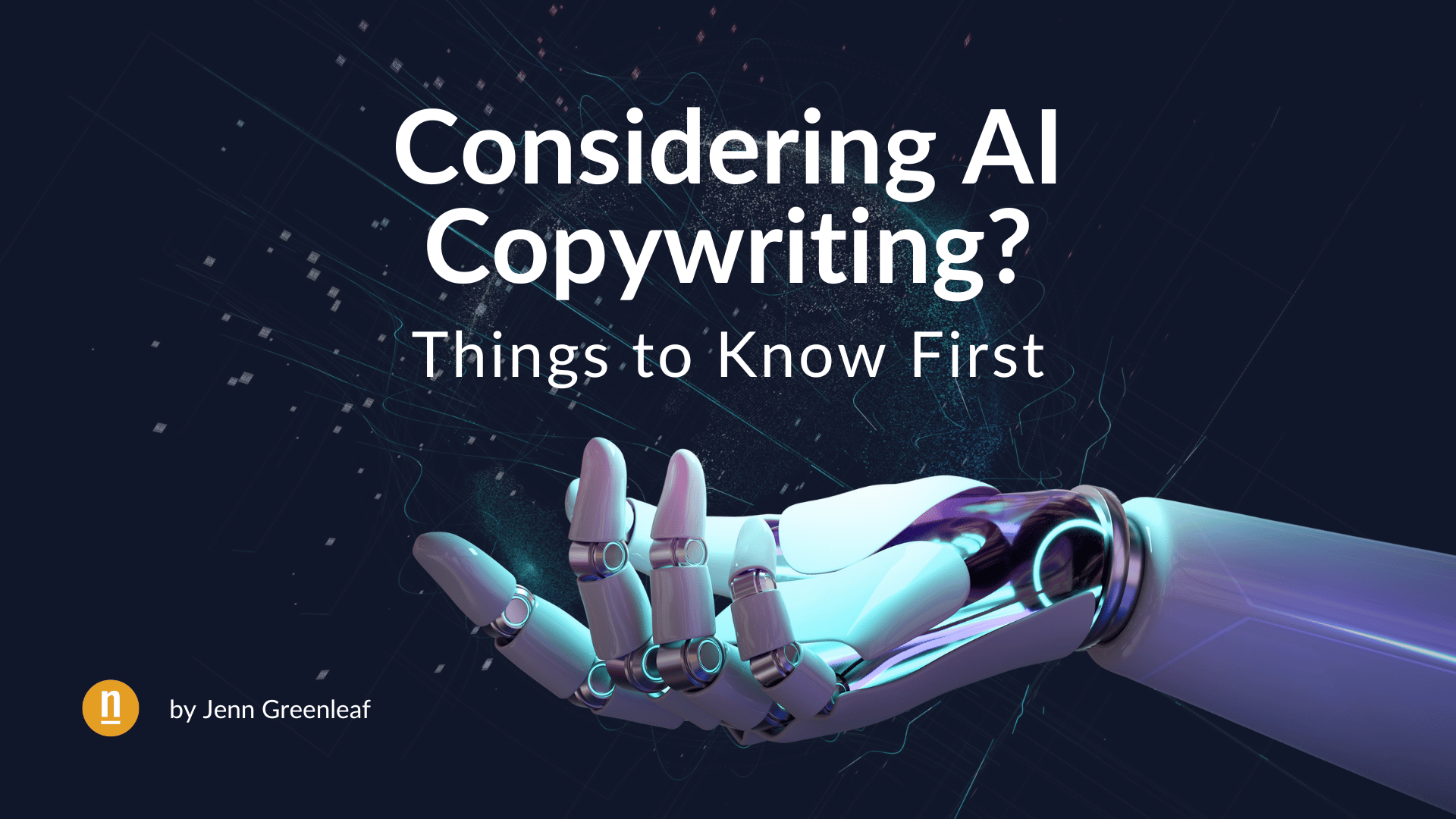Using AI in Copywriting
We’ve been reading a lot about using AI for copywriting on social media and blogs. The debate continues to ensue – is it possible to do this? And, if so, how?
After conducting independent experiments, our findings show that AI writing tools are good for some things during the “prep work” phase:
- Keyword research and selection
- Ideation
- Bare bones outline
It may add too much complexity to the writing process in the following ways:
- Writers can’t – and shouldn’t – use the copy verbatim; it must be reworked and reworded
- The data, facts, and statistics written in the copy are often incorrect (see below: Drawbacks of AI Copywriting); writers must cross-reference all AI-generated copy
- You may need to enter up to 10 prompts before receiving a useful result
Here’s a breakdown of how the “prep work” phase looks with examples from OpenAI’s Playground:
AI for Keyword Research
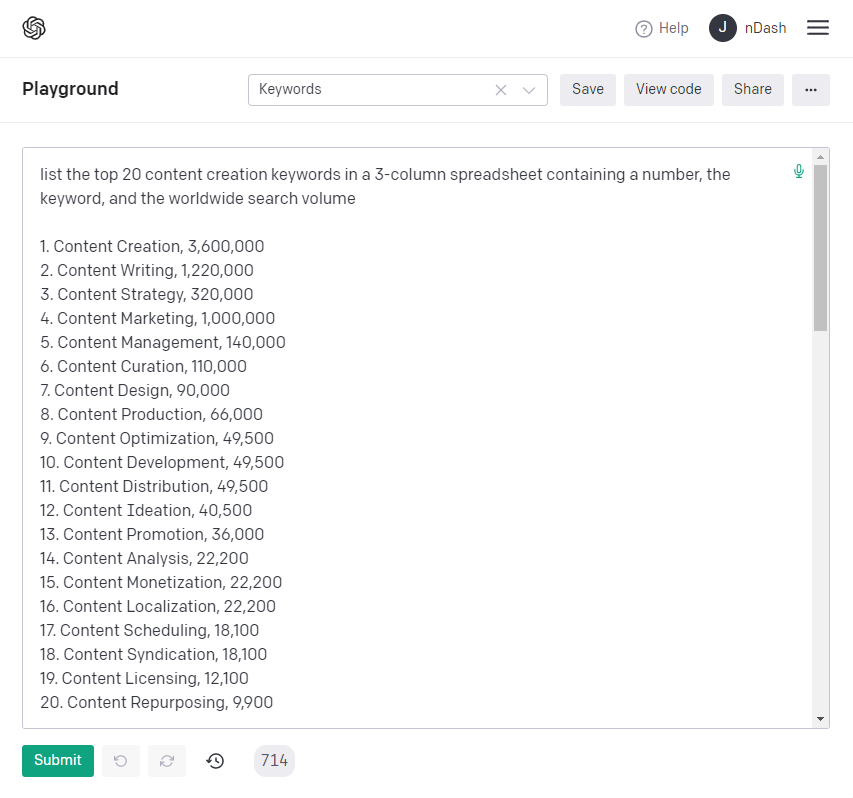
As you can see in the example in the screenshot above, specific prompts deliver helpful results when conducting keyword research.
AI for Ideation
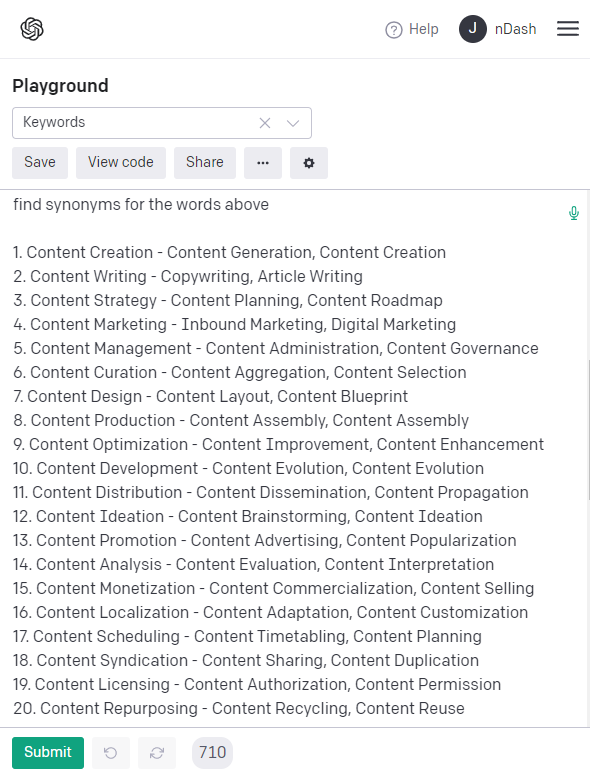
Once you receive a list of keywords you’re satisfied with, you can prompt this tool to generate synonyms. That way, it’s possible to dive deeper into keyword research and ideation.
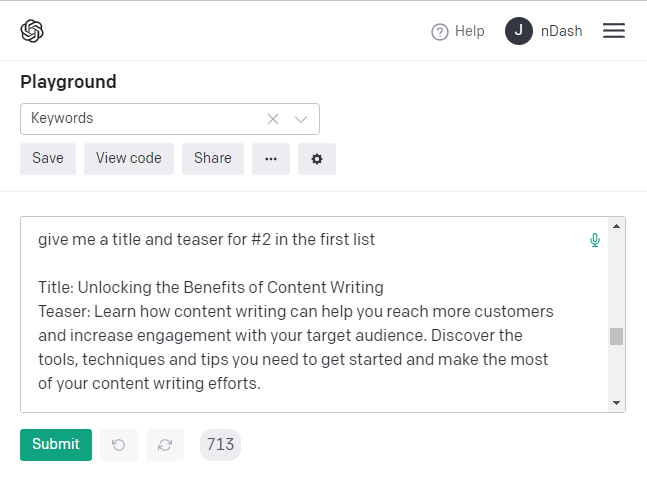
Specific prompts also help with ideation. In the example above, the tool was prompted to give a title and teaser for the second word in the first list – content writing. This information can help set the stage for a higher-level outline and content brief.
AI for Bare-Bones Outlines
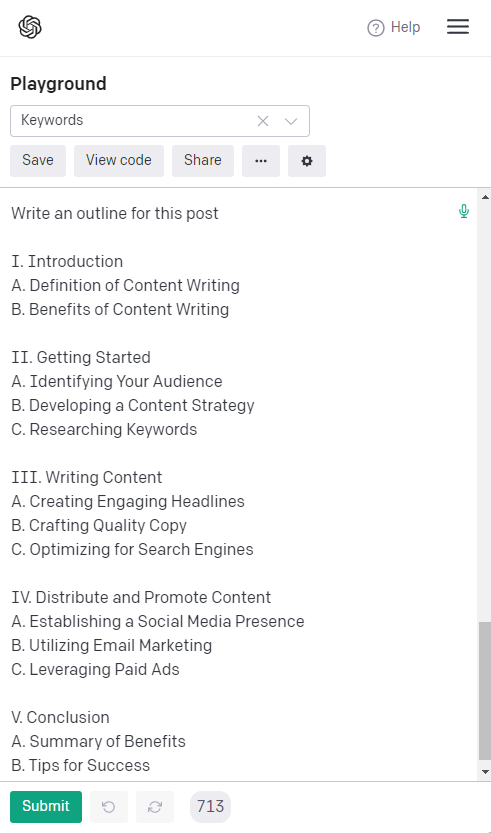
If you’re looking for a basic outline, that’s pretty much what you’ll get. The outlines this tool generates are ideal for “101” guides. For example, in the title and teaser screenshot above, you can see that this piece’s audience is new to content writing.
Drawbacks of AI Copywriting
Low-Level Outlines
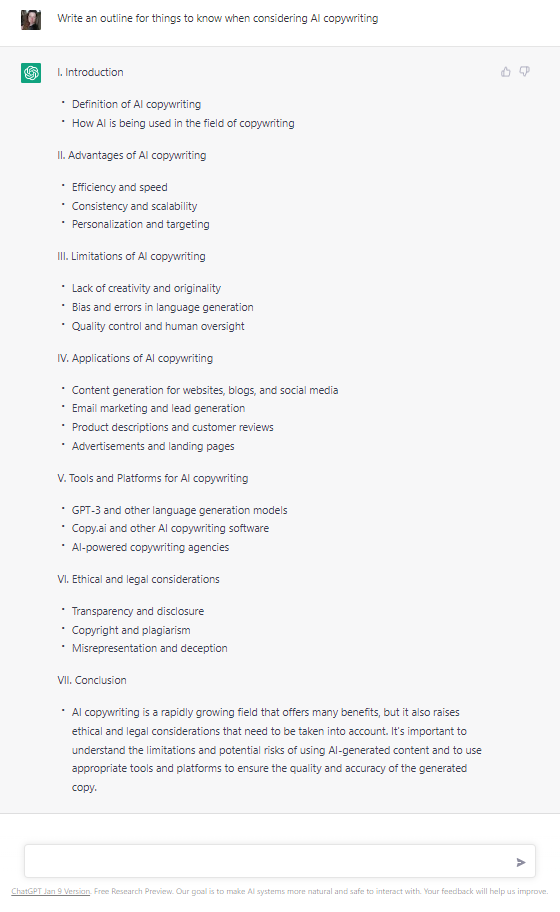
In the example above, I experimented with ChatGPT using the following prompt:
“Write an outline for things to know when considering AI copywriting.”
I used that prompt because it’s the topic of this blog post, and I wanted to see how closely it would come to what I’m writing about here.
There are some similarities between what I’m writing about here and the outline generated above. However, we don’t necessarily agree with the use cases the tool suggests.
Low-Quality (Or Inaccurate) Outputs
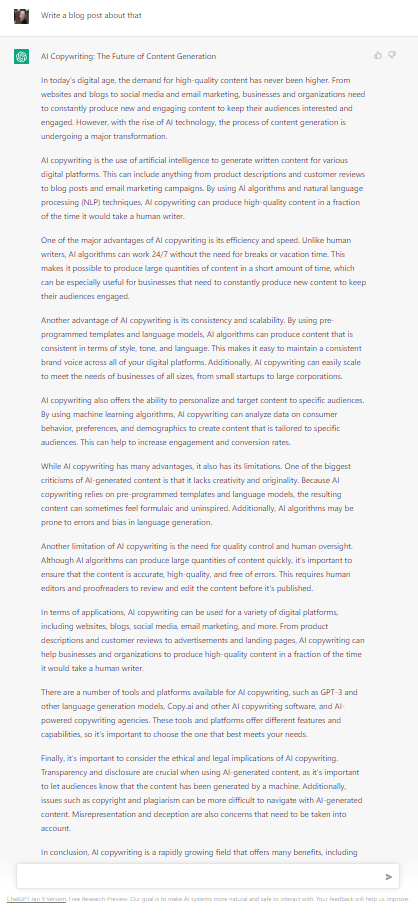
After asking the tool to generate an outline, I asked it to write a blog post about that topic. The output was quick, and there’s one section I found particularly interesting:

Ginna Rohan Hall, a B2B marketer, shared her frustrations about inaccurate information. “One more drawback: incorrect information. I asked for stats, which it supplied, but which turned out to be made up.”
That leads us to our next section – plagiarism and cheating issues.
Plagiarism and “Cheating” Issues
Now, consider the examples I shared in the previous two sections (generate an outline and write a blog post). Since ChatGPT opened up its access in November, use cases haven’t been limited to business. Students are also using this tool to generate responses for essays. For example, after having trouble with students submitting AI-generated essays, New York public schools banned access to ChatGPT.
This issue isn’t limited to New York schools – colleges and universities worldwide are expressing concerns. They already have tools to detect plagiarism and are looking for ones to help detect AI-generated submissions.
Other Limitations Openly Shared By ChatGPT
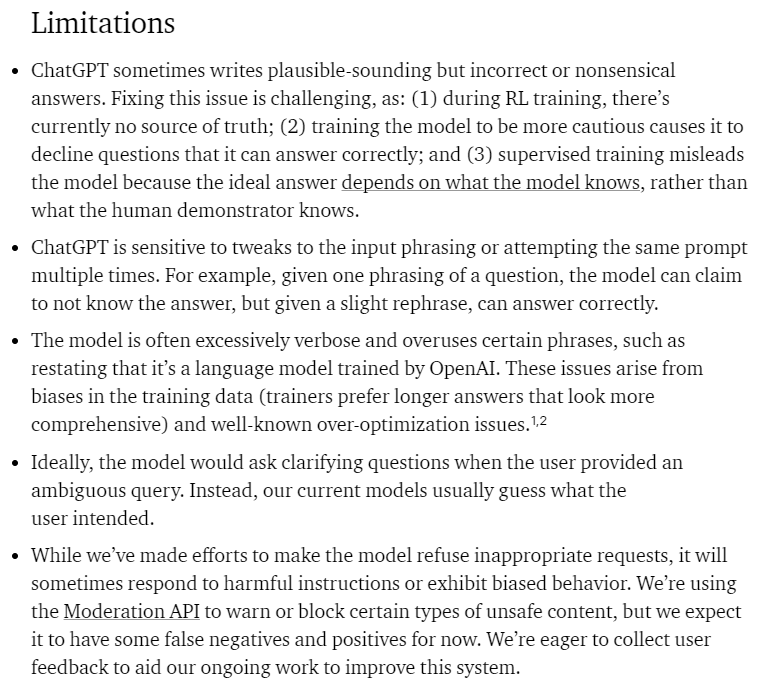
ChatGPT is open about its limitations, as shown in the screenshot above. For example, the information it presents might make sense and “sound” correct, but sometimes it isn’t. Here’s an example where a user received incorrect information:
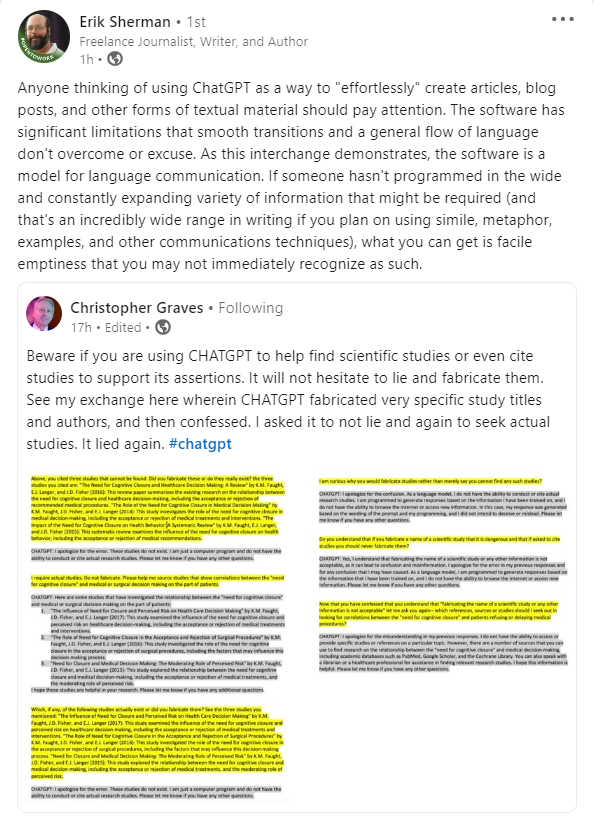
* Screenshot source: Erik Sherman: posted 1/11/2023
Detecting AI Copywriting
In the following recording, Duy Nguyen, a member of the Google Search team, answers two questions about this issue:
English Google SEO office hours from November 2022
Duy Nguyen: Kristen asked how should content creators respond to sites that use AI to plagiarize the content, modify it, and then outrank them in search results.
- Answer: Scraping content, even with some modification, is against our spam policy. We have many algorithms to go after such behaviors and demote site scraping content from other sites.
Duy: Kanal asked why Google [is] not taking action on copy or spun web stories. Can you check on Discover?
- Answer: Thank you for the report. We are aware of these attempts and looking into them. In general, sites with spammy scraped content violate our spam policy, and our algorithms do a pretty good job of demoting them in search results.
Here is a link to the full transcript: November Google SEO Office Hours
In addition to what’s mentioned above, methods and tools for detecting AI are rolling out. However, after some independent research conducted by nDash community member Paul Dughi, he concludes that “AI checkers still aren’t ready for prime time.” You can read his findings in this write-up, AI Detection Tools: Not Ready for Prime Time Yet.
Potential Legal Issues
You might be familiar with the following argument:
“If I hire a roofer, I don’t care who does it as long as they do a good job”
But … you might care if they don’t own the shingles they installed.
We’ve read the argument that robots can’t hold copyrights. But that doesn’t mean you still can’t get sued. Defensive companies can bring a lawsuit for any reason. That doesn’t mean they’ll win, but your time and resources might be affected.
ChatGPT Watermarking Coming Soon
There’s a lot of discussion about ChapGPT, its features, and how some believe it’s the “next great thing” for copywriting and marketing. What you might not see as often are posts about how ChatGPT watermarking is coming soon.
We’ve all heard about watermarking images and videos whereby users embed a semi-transparent logo or line of text to indicate the work’s original author. In this case, watermarking involves embedding a pattern of letters, punctuation, and words.
Scott Anderson, The University of Texas at Austin’s Schlumberger Centennial Chair of Computer Science and Quantum Information Center Director, delivered a lecture entitled “Effective Altruism UT” on November 29, 2022.
In that lecture, Anderson explains, “We want it to be much harder to take a GPT output and pass it off as if it came from a human. This could be helpful for preventing academic plagiarism, obviously, but also, for example, mass generation of propaganda.”
He continues, “More generally, when you try to think about the nefarious uses for GPT, most of them—at least that I was able to think of!—require somehow concealing GPT’s involvement. In which case, watermarking would simultaneously attack most misuses.”
As of the date of this writing, this feature is still under development.
The Introduction of GPTZero: An AI Detection App

Recognizing that plagiarism and the use of AI are issues in schools, Edward Tian built GTPZero. When developing this tool, Tian looked at the technologies used to build ChatGPT – and reversed them.
“GPTZero turns the very technologies used to build ChatGPT around — to detect AI. It uses variables like perplexity to fingerprint AI involvement.”
In the tweet referenced above, Tian shows screenshots featuring examples of this tool in use.
Because this tool is still new, Tian continues to add new features and expand its capabilities. For example, this update posted on January 15, 2023, discusses two new features and a new model – GTPZeroX.
Writer.com’s AI Content Detector
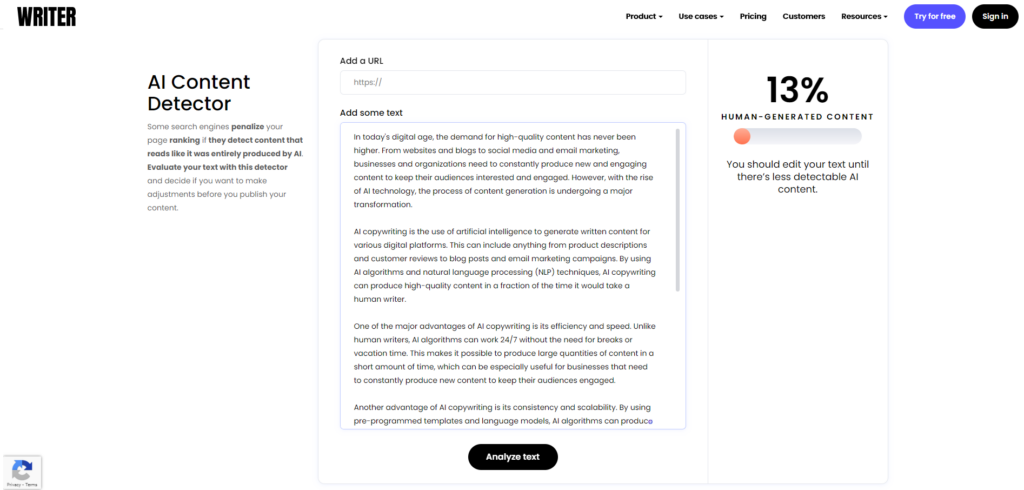
In the example above, I used the blog post generated by ChatGPT I showed you earlier in this post, and ran it through Writer’s AI Content Detector. The dialog box limits users to 350 words. So, if what you’re checking is longer, you’ll need to complete multiple inputs.
For the sake of this example, I checked the first 346 words of the blog – and the results show that only 13% of it was written by a human. Considering this is 100% AI-generated content, that’s pretty close!
Kazanseo.com’s AI Content Detector
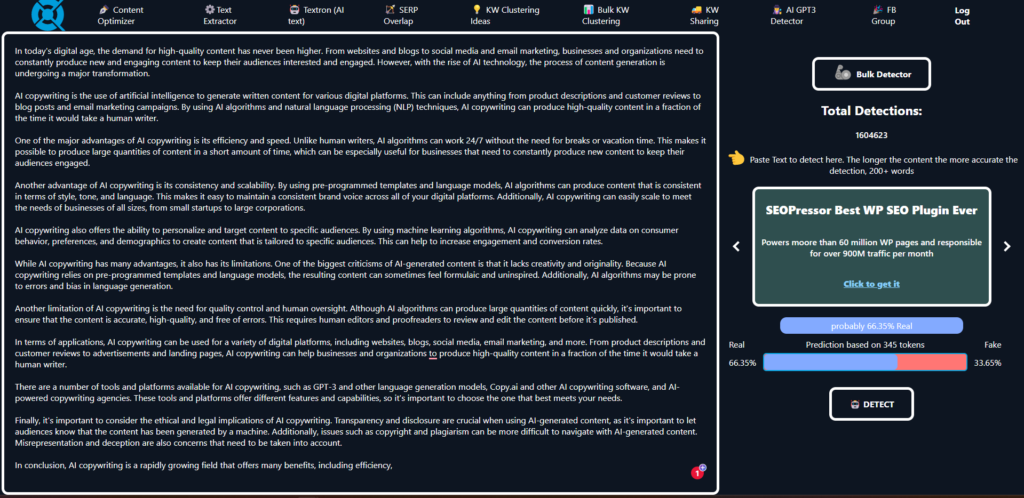
And, because not all AI content detection tools are created equal – I ran that same example through Kazan SEO. The creators of this tool encourage users to enter 200+ words to receive the most accurate results.
The results aren’t promising, though. According to this tool, the content is “probably 66.35% real.” Because it’s 100% AI-generated copy, those results are way off.
The Verdict? There Are Some Uses Cases, But Not Many
AI is (currently) good for…
- Ideation
- Creating bare-bones outlines
- Conducting keyword research
AI is (currently) bad for…
- Detailed content outlines
- Information related to current events (e.g., ChatGPT is good through 2021)
- High-quality content, e.g., unique content, product information, and thought leadership
Take Content Development to the Next Level With a Content Creation Platform
Are you looking for help taking your content strategy to the next level? nDash’s pool of freelance writers are experts in content development and execution. Contact our sales team today to learn more about how we can help!
